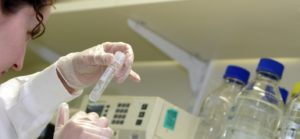Early exposure to germs could help prevent ALL, UK Professor says
New analysis released today by the Institute of Cancer Research, London, has identified a possible link between children genetically predisposed to acute lymphoblastic leukaemia and a lack of exposure to germs in the first years of life.
The analysis, developed by Professor Mel Greaves from the Institute of Cancer Research and based on three decades of research, suggests today’s clean homes and lack of exposure to common bacteria and viruses during the first year of life could attribute to higher diagnoses rates.
Acute lymphoblastic leukaemia (ALL) affects one in 2,000 children and was considered “lethal” in the 1950s and 1960s. Today, approximately 90 per cent of children will be cured, but only after lengthy and often gruelling treatment regimes which can have life long side effects.
Professor Greaves’ research suggests the incidence of the disease is caused through a two-step process – the first being a genetic mutation that occurs in the womb, and the second exposure to infection.
One in 20 children are born with the genetic mutation that puts them potentially at risk, with only one percent of those going on to develop the disease. However, Professor Greaves’ research suggests that the disease may not progress at all if these genetically predisposed children were exposed to common infections earlier in life.
The insight has been described as a “paradox of progress” in today’s modern society, where children are kept in such clean environments they lack exposure to microbes leading to reduced immune systems.
Professor Greaves said the incidence of the disease was increasing at around one per cent each year in clean, modern societies across the world. However, in poorer countries, where there was a lack of hygiene and larger families which exposed young children to early infection, ALL rates were “low or non-existent”.
“The research strongly suggests that ALL has a clear biological cause, and is triggered by a variety of infections in predisposed children whose immune systems have not been properly primed,” Professor Greaves said.
“It also busts some persistent myths about the causes of leukaemia, such as the damaging but unsubstantiated claims that the disease is commonly caused by exposure to electro-magnetic waves or pollution.
“I hope this research will have a real impact on the lives of children. The most important implication is that most cases of childhood leukaemia are likely to be preventable,” Professor Greaves said.
He is now investigating whether early introduction and exposure to harmless, common germs could help the disease developing.
“It might be done in the same way that is currently under consideration for autoimmune disease or allergies – perhaps with simple and safe interventions to expose infants to a variety of common and harmless ‘bugs’.”
A Leukaemia Foundation spokesperson has described the research as another piece in the puzzle of childhood leukaemia and a promising step toward a cure of tomorrow – however more research needed to be done into the cause of the disease.
“Research like this provides us with a piece of the puzzle to understanding this disease and it’s important to remember that there is still a lot to learn about leukaemias,” they said.
“The Leukaemia Foundation strongly advocates for more research and continued global collaborations to bring us closer to a future were we see no more children affected by cancer.”
